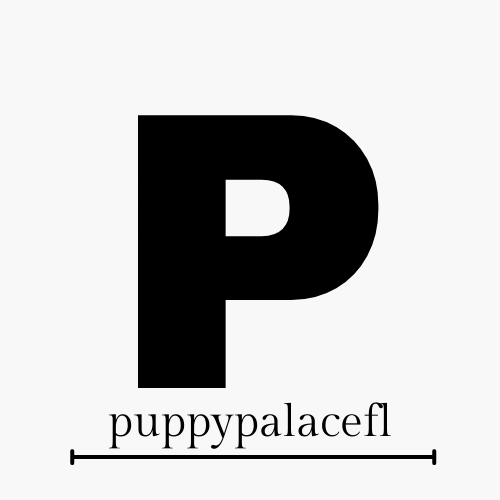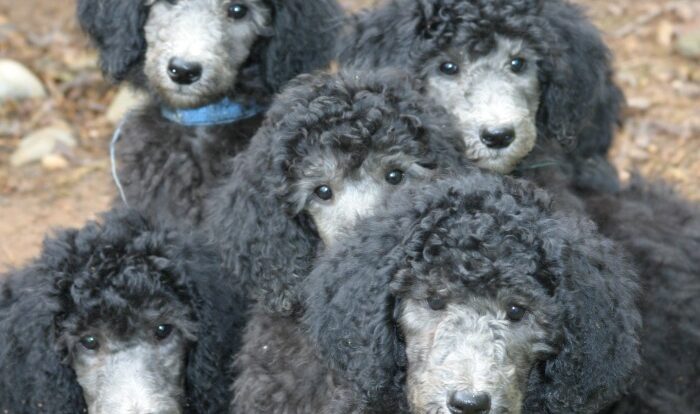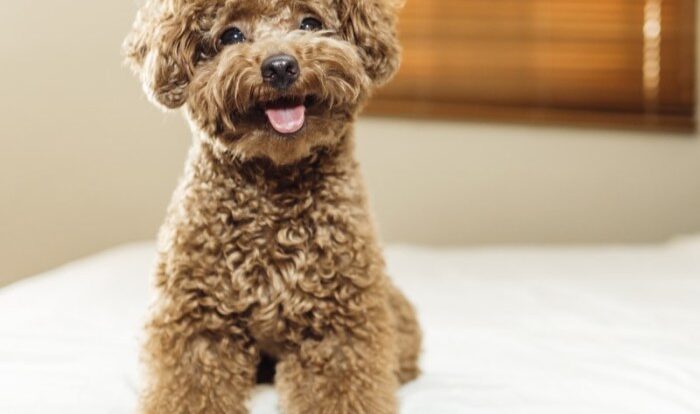Flat coated retriever puppies steal the spotlight in this comprehensive guide, drawing readers in with captivating insights and valuable information.
From their unique characteristics to training tips and health considerations, this guide covers everything you need to know about raising a happy and healthy flat coated retriever puppy.
Background Information: Flat Coated Retriever Puppies

Flat-coated retrievers have a rich history dating back to the mid-19th century in England. They were originally bred from a combination of Newfoundland, Labrador, and possibly other spaniel breeds. These dogs were specifically designed to retrieve game for hunters, excelling in both water and land retrieval tasks.
Characteristics and Traits of Flat-Coated Retriever Puppies
Flat-coated retriever puppies are known for their friendly and outgoing nature. They are intelligent, playful, and eager to please, making them excellent companions for families. These puppies have a shiny black or liver-colored coat that is dense and water-resistant, ideal for their retrieving duties.
As they grow, they develop a graceful and athletic build, with a wagging tail and a cheerful expression that is characteristic of the breed.
- Highly trainable: Flat-coated retriever puppies are quick learners and respond well to positive reinforcement training methods.
- Social and affectionate: These puppies thrive on human interaction and enjoy being part of the family unit.
- Energetic and playful: Flat-coated retriever puppies have a high energy level and require regular exercise to keep them happy and healthy.
Popularity of Flat-Coated Retriever Puppies as Pets
Flat-coated retriever puppies are popular as pets due to their friendly and affectionate nature. They are great with children and other pets, making them a versatile choice for families. Additionally, their intelligence and trainability make them well-suited for various activities such as obedience trials, agility competitions, and hunting events.
Overall, flat-coated retriever puppies make wonderful companions for those seeking a loyal and active canine friend.
Physical Features
Flat-coated retriever puppies are known for their adorable appearance and unique physical characteristics. As they grow, these puppies undergo various changes in size, weight, coat colors, and patterns. Let’s delve into the typical physical features of flat-coated retriever puppies.
Size and Weight Range
Flat-coated retriever puppies are medium to large-sized dogs with a sturdy build. On average, these puppies can weigh between 55 to 75 pounds (25 to 34 kg) and stand around 22 to 24 inches (56 to 61 cm) tall at the shoulder.
However, individual puppies may vary in size and weight based on genetics and nutrition.
Coat Colors and Patterns
Flat-coated retriever puppies have a lustrous, dense coat that is typically solid black, liver (brown), or occasionally dark golden. The coat is sleek and flat, with feathering on the legs, chest, and tail. While black is the most common color, liver-colored puppies are also highly sought after.
As they mature, their coat may develop slight waves but should remain flat and smooth.
Changes in Physical Features
As flat-coated retriever puppies grow, their bodies undergo various changes. They start to develop muscle mass, their bones grow and solidify, and their coat starts to fully come in. The puppy coat may shed as the adult coat grows in, leading to changes in texture and appearance.
By the time they reach adulthood, flat-coated retrievers exhibit a well-proportioned, athletic build with a glossy coat that requires regular grooming to maintain its beauty and health.
Care and Maintenance
Flat-coated retriever puppies require regular grooming, training, socialization, exercise, and a balanced diet to ensure their overall well-being and happiness.
Grooming Requirements, Flat coated retriever puppies
Flat-coated retriever puppies have a dense, water-resistant coat that requires regular grooming to prevent matting and reduce shedding. Brushing their coat at least 2-3 times a week with a slicker brush or comb can help maintain their coat’s health and shine.
Bathing should be done when necessary, using a mild dog shampoo to avoid stripping their natural oils. Regularly checking their ears for signs of infection and trimming their nails are also essential grooming tasks.
Training and Socialization Tips
Training flat-coated retriever puppies should start early to establish good behavior habits. Positive reinforcement techniques, such as treats and praise, work well with this intelligent breed. Socialization is crucial to prevent them from becoming shy or fearful as they grow.
Exposing them to different environments, people, and animals can help them become well-adjusted and friendly adults.
Exercise Needs and Dietary Considerations
Flat-coated retrievers are active and energetic dogs that require daily exercise to stay healthy and happy. Providing them with regular walks, playtime, and mental stimulation through interactive toys can help burn off their excess energy. A balanced diet tailored to their age, size, and activity level is crucial for their growth and development.
High-quality dog food with the right balance of protein, fats, and carbohydrates is recommended for their overall health.
Health and Wellness

Flat-coated retriever puppies, like all dog breeds, are susceptible to certain health issues that may affect their overall well-being. It is essential for owners to be aware of these common health concerns and take proactive measures to ensure the health and wellness of their furry companions.
Common Health Issues
- Cancer: Flat-coated retrievers are prone to certain types of cancer, such as hemangiosarcoma and lymphoma. Regular veterinary check-ups can help detect any signs of cancer early on.
- Hip Dysplasia: This is a common orthopedic condition in flat-coated retrievers, which can lead to pain and mobility issues. Proper diet, exercise, and weight management can help reduce the risk of hip dysplasia.
- Progressive Retinal Atrophy (PRA): PRA is a genetic eye disorder that can lead to vision loss in dogs. Regular eye examinations by a veterinarian can help monitor the progression of PRA.
Importance of Regular Veterinary Check-ups
Regular veterinary check-ups are crucial for flat-coated retriever puppies to ensure early detection and treatment of any health issues. These check-ups allow veterinarians to monitor the puppy’s growth, development, and overall health, as well as administer necessary vaccinations and preventive medications.
Preventive Measures
- Maintain a Healthy Diet: Providing a balanced diet tailored to the puppy’s nutritional needs can help support their immune system and overall health.
- Regular Exercise: Engaging in regular exercise helps keep flat-coated retriever puppies physically fit and mentally stimulated.
- Dental Care: Brushing the puppy’s teeth regularly and providing dental chews can help prevent dental issues such as tartar build-up and gum disease.
- Parasite Control: Administering regular flea, tick, and heartworm preventives can protect the puppy from harmful parasites.
Temperament and Behavior
Flat-coated retriever puppies are known for their friendly and outgoing nature. They are intelligent, eager to please, and have a playful demeanor that makes them great companions for families. These puppies are typically very social and enjoy being around people.
Handling Behavioral Challenges
Flat-coated retriever puppies are energetic and may exhibit some behavioral challenges if not properly trained and exercised. To address these challenges, consistent training from an early age is essential. Positive reinforcement techniques work best with this breed, as they respond well to praise and rewards.
Providing plenty of physical and mental stimulation through activities like obedience training, interactive games, and walks can help channel their energy in a positive way.
Sociability and Compatibility
Flat-coated retriever puppies are generally good with children and other pets, especially if they are socialized properly from a young age. Their friendly and gentle nature makes them excellent playmates for children, and they often form strong bonds with their human family members.
When introduced and socialized correctly, they can also get along well with other dogs and pets in the household.
Training and Development

Training and development are crucial aspects of raising a well-behaved flat-coated retriever puppy. Starting with house training and progressing through stages of development, positive reinforcement plays a key role in fostering a strong bond between you and your furry companion.
House Training Flat-Coated Retriever Puppies
House training a flat-coated retriever puppy requires consistency, patience, and positive reinforcement. Create a designated potty area outside and establish a routine for feeding and bathroom breaks. When your puppy eliminates in the right spot, reward them with praise or treats to reinforce good behavior.
Accidents will happen, but avoid punishment as it can lead to fear or anxiety.
Stages of Development in Flat-Coated Retriever Puppies
Flat-coated retriever puppies go through various stages of development, including the neonatal period, socialization period, juvenile period, and adolescence. During these stages, it is essential to provide proper socialization, training, and mental stimulation to support their growth and well-being. Monitor their progress closely and adjust training methods accordingly.
Fostering a Strong Bond Through Training and Positive Reinforcement
Building a strong bond with your flat-coated retriever puppy involves consistent training and positive reinforcement. Use rewards such as treats, toys, and praise to encourage good behavior and strengthen the bond between you and your puppy. Spend quality time together, engage in training activities, and be patient as your puppy learns and grows.
This positive approach will help create a lasting and loving relationship with your furry friend.
Breeding and Litters

Breeding and litters play a crucial role in the development and preservation of the flat-coated retriever breed. Responsible breeding practices are essential to maintain the health, temperament, and conformation of these beloved dogs.
Breeding Process
Breeding flat-coated retrievers involves careful selection of parent dogs based on health clearances, temperament, and conformation standards. Breeders aim to improve the overall quality of the breed with each generation. Mating is carefully planned to avoid hereditary health issues and maintain breed standards.
Average Litter Size
The average litter size for flat-coated retriever puppies typically ranges from 6 to 10 puppies. However, litter sizes can vary based on factors such as the age of the dam, her health status, and breeding practices. It is essential for breeders to provide proper care and attention to both the dam and the puppies during the whelping process.
Considerations for Responsible Breeding Practices
Health Testing
Prior to breeding, both parent dogs should undergo health screenings to detect and prevent hereditary conditions.
Temperament Evaluation
Selecting parent dogs with desirable temperaments helps ensure that the puppies will inherit positive behavioral traits.
Ethical Placement
Responsible breeders prioritize the well-being of their puppies and carefully screen potential owners to guarantee suitable homes.
Breed Preservation
Breeding should aim to preserve the unique characteristics of the flat-coated retriever breed, maintaining breed standards and working abilities.
Socialization and Playtime
Socialization and playtime are crucial aspects of a flat-coated retriever puppy’s development. It helps them build confidence, learn appropriate behavior, and form positive relationships with other dogs and humans.
Socializing with Other Dogs
Introducing your flat-coated retriever puppy to other dogs from a young age is essential for their social development. Organize playdates with well-behaved dogs to allow your puppy to learn proper social cues and behaviors. Ensure that the interactions are supervised and positive to prevent any negative experiences.
Importance of Playtime and Mental Stimulation
Playtime not only provides physical exercise but also offers mental stimulation for flat-coated retriever puppies. Engage them in interactive games like fetch, tug-of-war, or hide-and-seek to keep their minds sharp and active. Puzzle toys and treat-dispensing toys are also great for mental stimulation.
Activities and Games
Fetch
A classic game that allows your puppy to use their natural retrieving instincts.
Tug-of-War
A fun way to bond with your puppy while also providing physical exercise.
Hide-and-Seek
Hide treats or toys around the house for your puppy to find, stimulating their sense of smell and problem-solving skills.
Agility Training
Set up a mini agility course in your backyard to challenge your puppy both mentally and physically.
Obedience Training
Teach basic commands like sit, stay, and come, which not only provide mental stimulation but also establish good behavior.Remember to tailor the activities to your puppy’s age and abilities, and always provide positive reinforcement during playtime to encourage good behavior.
Regular socialization and playtime will help your flat-coated retriever puppy grow into a well-rounded and happy adult dog.
Adoption and Rescue
When considering adding a flat-coated retriever puppy to your family, adoption from a shelter or rescue organization is a commendable option that comes with various benefits. Not only are you giving a deserving dog a second chance at a loving home, but you are also potentially saving a life.
Additionally, rescue puppies often come with a lower adoption fee compared to purchasing from a breeder. Let’s delve into the process of adopting a flat-coated retriever puppy from a shelter or rescue.
Finding a Reputable Rescue Organization
When looking to adopt a flat-coated retriever puppy from a rescue organization, it is essential to find a reputable and trustworthy group. Here are some steps to help you in the process:
- Research: Start by researching different rescue organizations that specialize in flat-coated retrievers. Look for reviews, testimonials, and recommendations from other adopters.
- Visit Shelters: Visit local animal shelters and rescue centers to see if they have any flat-coated retriever puppies available for adoption.
- Networking: Reach out to breed-specific rescue groups or contacts in the dog community who may have information on available puppies.
- Application Process: Be prepared to go through an application process, including interviews, home visits, and references, to ensure you are a suitable match for the puppy.
- Adoption Fees: Understand the adoption fees involved and what they cover, such as vaccinations, spaying/neutering, and microchipping.
By following these steps and taking the time to find a reputable rescue organization, you can provide a loving home to a flat-coated retriever puppy in need.
Fun Facts and Trivia
Flat-coated retriever puppies are not only adorable but also quite fascinating in their own right. Let’s delve into some interesting facts and trivia about these charming little canines.
Unique Behaviors and Talents
Flat-coated retriever puppies are known for their boundless energy and enthusiasm. They excel in activities like agility, obedience, and field trials, showcasing their intelligence and versatility. These puppies have a natural instinct for retrieving objects, making them excellent hunting companions.
Their wagging tails and friendly demeanor make them popular therapy dogs, spreading joy wherever they go.
Anecdotes and Stories
One charming story about flat-coated retriever puppies involves their love for water. These pups have a strong affinity for swimming and playing in lakes, rivers, or even puddles. Their water-resistant coat and webbed feet make them excellent swimmers, with some puppies diving fearlessly into the water to retrieve toys or sticks.
Their playful nature and adventurous spirit often lead to heartwarming moments of joy and laughter for their owners.






